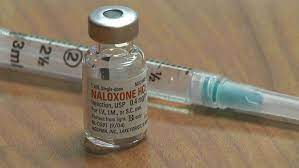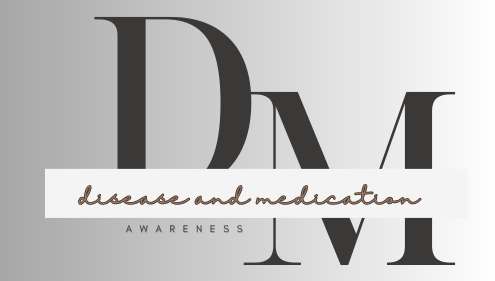What is naloxone?
Naloxone is a drug used to rapidly reverse opioid overdose. Opioids, similar to heroin, morphine, and tradition pain specifics, can beget life-hanging respiratory depression when taken in excess. Naloxone works by binding to the same receptor in the brain that opioids bind to, therefore snappily reversing their effects and restoring normal breathing.
What is opioid overdose?
Opioid overdose occurs when there’s an excessive amount of opioids in the body, leading to life-long symptoms, primarily respiratory depression. Opioids are a class of medicines that include both prescription specifics, like oxycodone, morphine, and fentanyl, as well as illegal substances like heroin. When opioids bind to specific receptors in the brain and spinal cord, they reduce the perception of pain but also suppress essential functions like breathing.
The signs and symptoms of an opioid overdose include :
Respiratory Depression: This is a hallmark point of opioid overdose. It can range from slow and shallow breathing to the complete conclusion of breathing.
Unresponsiveness: Individuals passing an overdose may come unresponsive, meaning they cannot be awakened or aroused.
Limpness: Muscles may come limp, and the person may appear veritably relaxed or “droopy.”
Blue or Pale Skin: Due to inadequate oxygenation, the skin may turn bluish or mealy.
Vomiting: Some individualities may vomit, which can further complicate the situation.
Opioid overdose is a medical emergency that requires immediate attention. However, exigency medical services should be communicated incontinently, if suspected. Naloxone, as mentioned in the former response, is a drug generally used to reverse opioid overdose and can be administered by onlookers or healthcare professionals to fleetly restore normal breathing. Education and access to naloxone are essential factors of detriment reduction strategies aimed at reducing opioid-related deaths. It’s pivotal for individuals who may be at risk of witnessing or passing an opioid overdose to be trained in the recognition of overdose symptoms and the proper administration of naloxone.
Pharmacokinetics
1.Absorption
Route of Administration: Naloxone can be administered through colorful routes, including intravenous( IV), intramuscular( IM), subcutaneous( SC), and intranasal.
Bioavailability: The bioavailability of naloxone varies depending on the route of administration. Intravenous administration provides the loftiest bioavailability, as it bypasses the first- pass metabolism. Intramuscular and subcutaneous routes also yield good bioavailability, but it may be kindly lower compared to IV administration.
Onset of Action: The onset of action is rapid-fire, especially with intravenous administration, making it effective for exigency situations.
2. Distribution
Protein binding: Naloxone has a moderate protein binding capacity, with roughly 45 to 60 bound to tube proteins.
Distribution into tissues: Naloxone has a fairly large volume of distribution, indicating wide distribution into apkins. It readily crosses the blood- brain hedge, which is essential for its action in reversing opioid goods in the central nervous system.
3. Metabolism
Metabolic Pathways: Naloxone undergoes expansive hepatic metabolism, primarily through glucuronidation. The primary metabolite is naloxone-3-glucuronide, which is pharmacologically inactive.
Enzymes Involved: The glucuronidation process is intermediated by the UDP- glucuronosyltransferase( UGT) enzymes in the liver.
4.Elimination
Half- Life: The half- life of naloxone is fairly short, generally around 30 to 81 twinkles. This short half- life contributes to the need for repeated dosing or nonstop infusion in some cases.
Excretion: Naloxone and its metabolites are primarily excreted in the urine. Renal concurrence plays a significant part in the elimination of naloxone from the body.

Special Populations
Hepatic Impairment: Hepatic impairment can affect the metabolism of naloxone. still, naloxone is still considered fairly safe in cases with hepatic dysfunction.
Renal Impairment: While naloxone is primarily excluded through the feathers, renal impairment isn’t a significant concern due to the rapid-fire metabolism and excretion of the medicine.
Other Considerations
Cross-Tolerance: Naloxone may precipitate pullout symptoms in individualities physically dependent on opioids due to its negative action. Care should be taken to manage these symptoms meetly.
Dosage form of Naloxone
It’s generally administered in an injectable form, either intramuscularly( IM) or intravenously( IV). The most common lozenge forms of naloxone include:
Naloxone Injectable solutions: Naloxone is frequently available in vials or ampules as a result for injection. The healthcare provider can administer it using a hype either into a muscle( intramuscular) or directly into a tone( intravenous).
Autoinjector: To make administration easier, autoinjectors are available for naloxone. These are pre-filled bias that allow for the rapid-fire delivery of the drug with a simple injection medium. Autoinjectors are designed to be stoner-friendly, allowing onlookers or caregivers to administer naloxone in exigency situations.
Nasal Spray : It is also available by the name of naloxone nasal spray, which is particularly useful for laypersons or first askers who may not have medical training. The nasal spray is administered into the nostrils, and it provides anon-invasive volition to injectable forms.
The choice of lozenge form depends on factors similar as the training of the person administering the drug, the available coffers, and the specific circumstances of opioid overdose.
Side effects of Naloxone
Naloxone is generally considered safe when used to reverse opioid overdose. still, like any drug, it can be associated with side goods. The side goods of naloxone are generally temporary and are a result of the rapid-fire reversal of opioid goods. Common side effects may include
Withdrawal Symptoms: Since naloxone fleetly reverses the goods of opioids, it can precipitate pullout symptoms in individualities who are physically dependent on opioids. pullout symptoms may include nausea, puking, sweating, increased heart rate, temblors, and agitation.
Rebound Respiratory Depression: In some cases, after the original reversal of opioid goods, there may be a threat of answer respiratory depression. This is a rush of slowed breathing, which can be a concern if the existent has ingested a potent and long- acting opioid.
Increased Blood Pressure: Naloxone administration can lead to an increase in blood pressure. Monitoring for hypertension is important, especially in individualities with cardiovascular issues.
Nervous System : Naloxone may beget nervous system- related side goods similar as seizures, although these are rare.
Vomiting: Some individualities may witness puking as a side effect of naloxone administration.
Conclusion
In conclusion, naloxone stands as a crucial and life-saving intervention in the context of opioid overdose. Its rapid reversal of opioid effects, particularly respiratory depression, can be instrumental in preventing fatalities associated with opioid use. The various forms of naloxone, including injectable solutions, autoinjectors, and nasal sprays, offer flexibility in administration, making it accessible to both medical professionals and laypersons alike.
While naloxone is generally considered safe, it is not without side effects, most notably the potential for precipitating opioid withdrawal symptoms. However, the benefits of promptly administering naloxone far outweigh the risks, emphasizing its pivotal role in emergency situation.

If conceivable, as you clear knowledge, would you mind updating your blog with more information? It is damned helpful in return me.